Top Language Learning Apps 2025 for Effective Learning
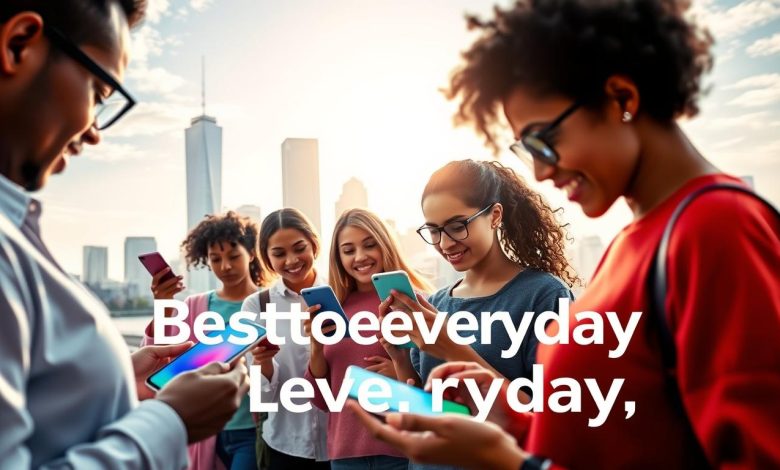
The landscape of language learning has dramatically evolved, with cutting-edge apps leveraging AI to make learning new languages more accessible and effective.
According to reviews, the best language learning app is the one you’ll actually use consistently. With numerous options available, choosing the right tool can be challenging.
This comprehensive guide evaluates the top language learning apps of 2025, analyzing their features, effectiveness, and pricing structures to help you make an informed decision.
Key Takeaways
- Discover the most effective language learning apps of 2025.
- Understand how AI technology enhances language learning.
- Compare pricing structures and features of top apps.
- Find the best app for your specific learning goals.
- Learn how to choose the right language learning tool for your needs.
The Evolution of Language Learning in 2025
The landscape of language learning has undergone a significant transformation in 2025. This evolution is characterized by a shift from traditional classroom settings to more immersive, technology-driven experiences.
How Technology Has Transformed Language Learning
Technology has been the driving force behind the transformation in language learning. Mobile technology, in particular, has democratized language education, making it accessible to anyone with a smartphone, regardless of their location or economic status. The integration of augmented reality allows learners to point their devices at objects in their environment and instantly learn vocabulary in context, creating powerful memory associations.
Moreover, machine learning algorithms now analyze user performance in real-time, identifying patterns in mistakes and adapting lesson plans to address specific weaknesses in pronunciation, grammar, or vocabulary retention. This personalized approach to language learning has significantly enhanced the learning experience.
The Rise of AI in Language Education
The rise of AI in language education has been a game-changer. In April 2025, Duolingo announced 148 new language courses created with generative AI, more than doubling its current catalog of courses. AI language tutors have evolved to provide conversational practice that closely mimics interactions with native speakers, complete with cultural nuances and colloquialisms that were previously difficult to learn without immersion.
Furthermore, voice recognition technology has become sophisticated enough to provide detailed feedback on pronunciation at a near-native level of accuracy, helping learners develop authentic accents. This advancement in AI-driven language learning apps has revolutionized the way we approach language education, making it more effective and engaging.
Benefits of Using Language Learning Apps in 2025
The year 2025 has seen a significant shift towards language learning apps due to their flexibility and effectiveness. These apps have transformed the way people learn new languages, offering a range of benefits that traditional methods cannot match.
Flexibility and Accessibility
One of the primary advantages of language learning apps is their flexibility. Users can learn at their own pace, anytime and anywhere, eliminating the need to adhere to a rigid class schedule. This flexibility is particularly beneficial for individuals with busy lifestyles.
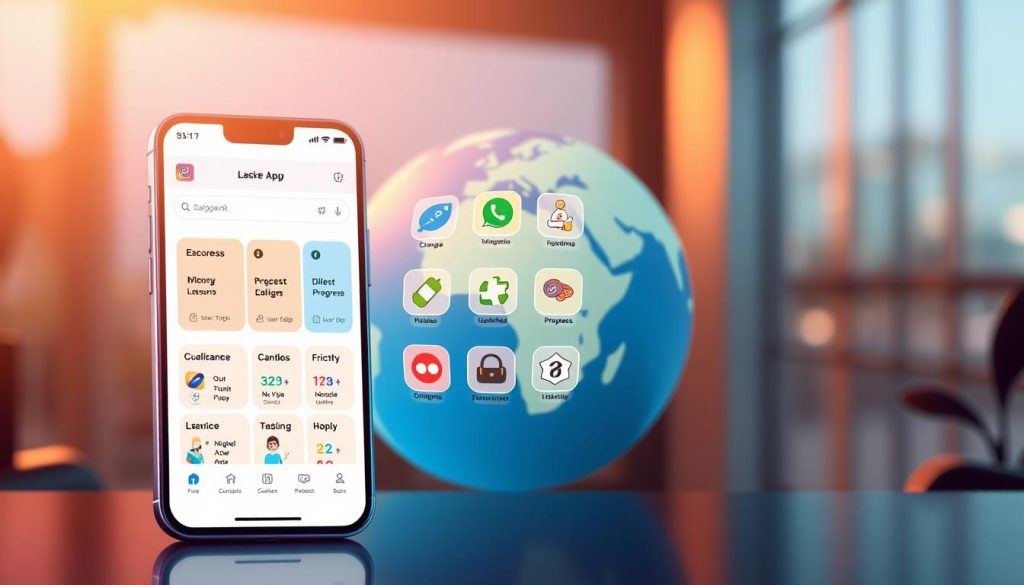
Personalized Learning Experiences
Language learning apps in 2025 utilize sophisticated algorithms to provide personalized learning experiences. These apps analyze the user’s learning patterns and adapt the content to suit their strengths, weaknesses, and learning style, making the learning process more efficient.
Cost-Effectiveness Compared to Traditional Methods
The cost-effectiveness of language learning apps is another significant advantage. Many apps offer comprehensive language courses at a fraction of the cost of traditional classes or private tutoring, making language learning more accessible to a wider audience.
In conclusion, the benefits of using language learning apps in 2025 are numerous, ranging from flexibility and personalized learning experiences to cost-effectiveness. As technology continues to evolve, these apps are likely to become even more effective, revolutionizing the way we learn new languages.
How We Evaluated Language Learning Apps 2025
To determine the best language learning apps in 2025, we conducted a thorough evaluation process. Our goal was to assess the effectiveness, efficiency, and engagement of various language learning tools.
Our Testing Methodology
Our comprehensive evaluation involved testing each language learning app for at least four weeks with daily usage. We assembled a diverse testing panel consisting of beginners, intermediate learners, and advanced polyglots to ensure our reviews reflected a broad user experience. Each app was evaluated based on a standardized rubric covering user interface design, content quality, and teaching methodology.
The testing panel’s progress was monitored through before-and-after assessments of vocabulary retention, grammatical accuracy, and conversational fluency. This approach allowed us to measure the actual language acquisition facilitated by each app.
Key Features We Looked For
We examined the implementation of AI features and their effectiveness in enhancing the learning experience through personalization and adaptive learning. The accessibility features of each app were also evaluated to determine how well they accommodated users with different learning styles and potential disabilities.
Additionally, we analyzed the value proposition of each app by comparing subscription costs against the breadth and depth of content offered, as well as the effectiveness of their teaching methodologies. This helped us identify the most cost-effective and user-friendly language learning apps.

Duolingo: The Gamified Learning Experience
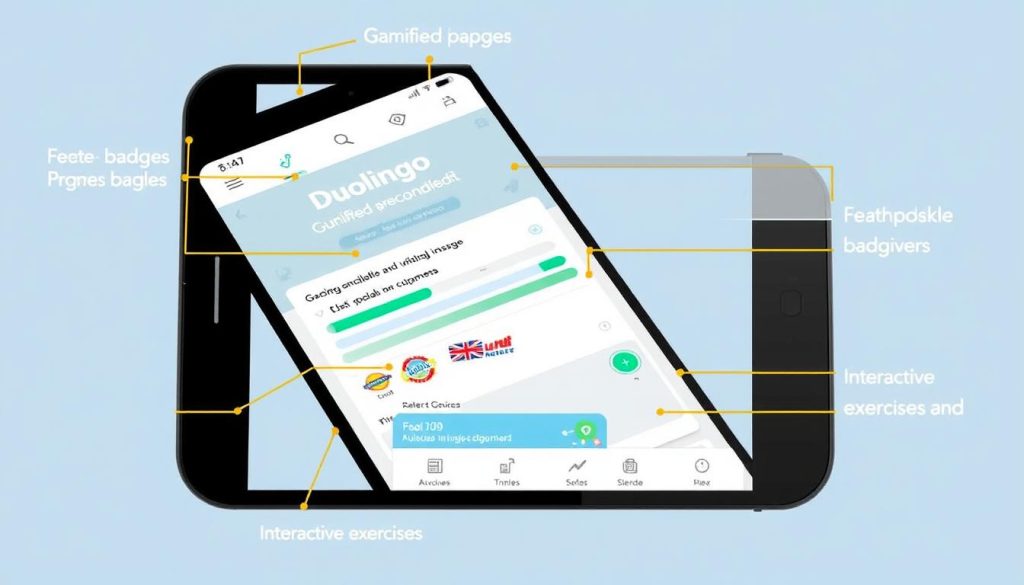
Duolingo’s popularity stems from its ability to transform language acquisition into an addictive, game-like experience. The app has maintained its position as the most popular language learning app in 2025 by continuously refining its gamified approach.
Overview
Duolingo employs techniques used by social networks and mobile-games companies to help users learn. The lessons are quick and enjoyable, making it downright addictive to use, thanks to its various social and gamification features. The app’s strength lies in its ability to make learning feel like play through short, varied lessons that combine speaking, listening, reading, and writing exercises in engaging 5-minute sessions.
Pros
The free version is surprisingly generous with almost all features available, with the only cost being ads after every lesson. The app’s social features create accountability through friend competitions, leaderboards, and streaks, leveraging behavioral psychology to maintain consistent practice habits.
Cons
While excellent for building vocabulary and basic sentence construction, some users find Duolingo less effective for developing advanced conversation skills or understanding the cultural nuances of language.
Pricing Structure
Duolingo offers a free version with optional paid upgrades. Starting at around $7 per month, Duolingo’s Super Duolingo removes ads and gives infinite hearts. Duolingo Max, starting at around $12 per month, adds AI-powered conversations and an Explain My Answer feature.
Special Features and AI Integration
Duolingo’s 2025 version features significantly enhanced AI capabilities, including personalized lesson plans that adapt to individual learning patterns and an “Explain My Answer” feature that provides grammatical context for corrections. The premium tiers offer valuable enhancements, including unlimited hearts, offline lessons, and advanced AI-powered conversation practice with virtual characters.
Babbel: Professional and Structured Learning
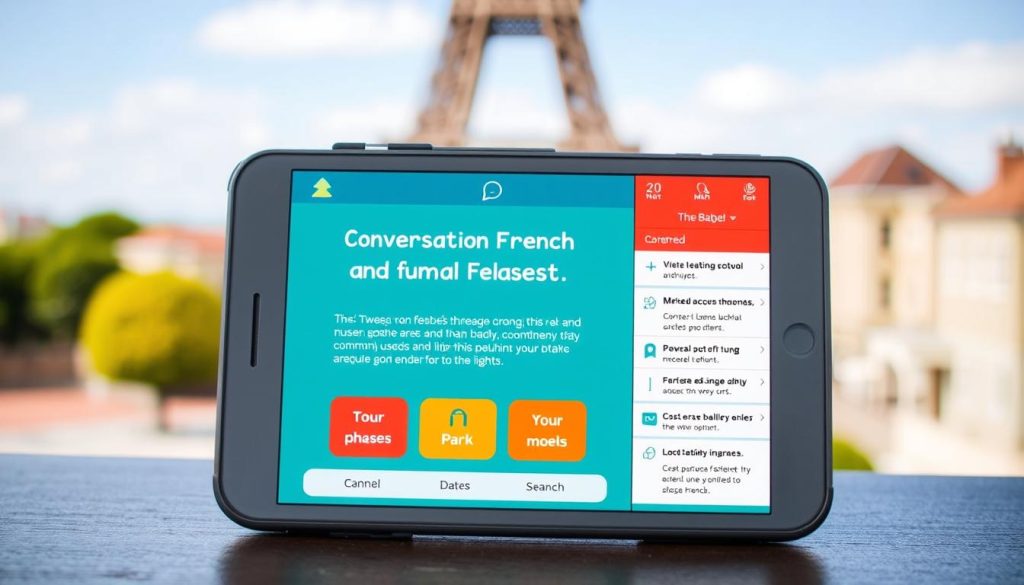
Babbel is distinguished by its well-structured lessons and effective repetition. The app empowers people to learn a new language and develop their skills through bite-sized lessons for real-world scenarios.
Overview
Babbel’s content is quite challenging, making it a good option for anyone with prior experience. According to reviews, Babbel is much more professional than alternatives, with many five-star reviews praising the app’s well-structured lessons with effective and easy-to-follow repetition. The app follows CEFR guidelines and includes reading, listening, and speaking activities, emphasizing learning the rules and reasoning of grammar and language structure.
Pros
The app excels in teaching practical, conversational language skills through lessons designed by professional linguists. Babbel places strong emphasis on grammatical understanding, explaining the “why” behind language rules.
Cons
While Babbel offers a comprehensive learning experience, its content may be too challenging for beginners.
Pricing Structure
Babbel’s pricing structure offers flexibility with options ranging from monthly subscriptions (approximately $13.95/month) to annual plans (around $6.95/month when paid yearly). Occasional promotions offer substantial discounts, making it more accessible.
Special Features and AI Integration
The 2025 version of Babbel features enhanced AI conversation practice that creates customized dialogue scenarios based on the user’s interests and learning goals. Babbel’s speech recognition technology provides detailed feedback on pronunciation and intonation, helping users develop more authentic-sounding speech patterns.
With its features and structured approach, Babbel is an excellent choice for those seeking a professional language learning experience. The app is designed to help learners develop practical vocabulary and grammar skills.
Rosetta Stone: The Immersive Learning Approach
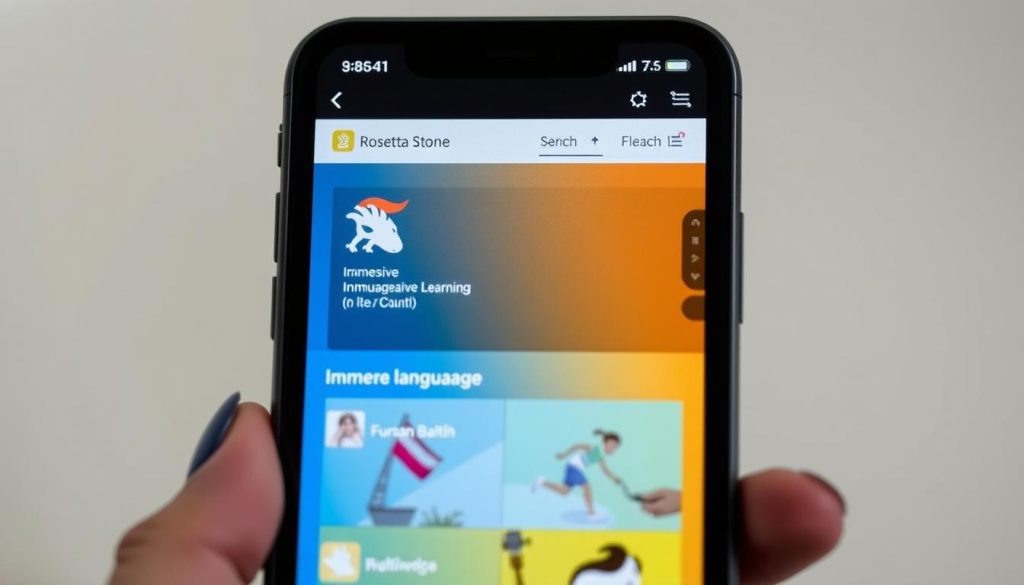
With its immersive methodology, Rosetta Stone stands out in the language learning landscape. The app is designed to teach languages by immersing users directly in the target language, avoiding translation and focusing on intuitive understanding through context and images.
Overview
Rosetta Stone continues to pioneer the immersion approach to language learning in 2025. The app’s methodology mimics the natural way humans learn their first language, building intuitive understanding through pattern recognition and contextual learning. This approach is enhanced by interactive activities and the option to listen to native speakers, helping to develop comprehensive language skills.
Pros
- Effective immersive experience that enhances overall understanding.
- Interactive activities and native speaker audio options.
- Augmented reality features for real-world language practice.
Cons
- The absence of translation and explicit grammar instruction can be challenging for some learners.
- May not be suitable for languages with structures very different from the learner’s native tongue.
Pricing Structure
Rosetta Stone offers various pricing options, including monthly subscriptions starting at approximately $11.99/month. Significant discounts are available for quarterly, annual, or lifetime access plans that provide access to all languages.
Special Features and AI Integration
The 2025 version of Rosetta Stone introduces AI-powered conversation scenarios that adapt to the learner’s proficiency level. The TruAccent speech recognition technology provides nuanced feedback on pronunciation, helping users develop an authentic accent. Additionally, augmented reality features allow learners to practice language skills in real-world contexts.
By combining immersive learning techniques with advanced AI technology, Rosetta Stone offers a comprehensive language learning experience that is both engaging and effective.
Pimsleur: Audio-Based Learning Excellence
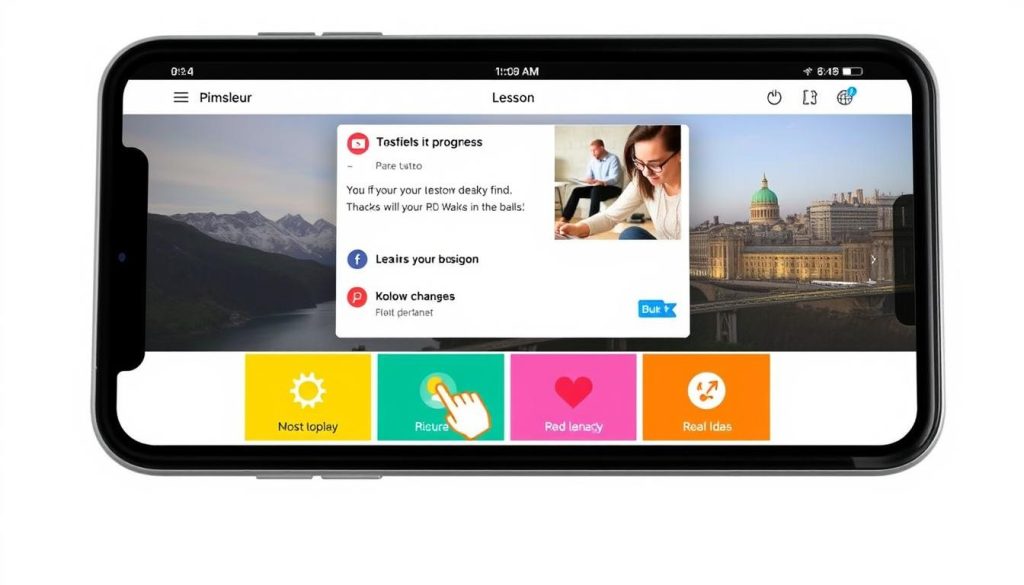
By focusing on speaking and listening skills, Pimsleur offers a unique language learning experience that stands out in the market. The app’s methodology is rooted in the research of Dr. Paul Pimsleur, emphasizing the importance of hearing a language in everyday situations and responding to it.
Overview
Pimsleur is renowned for its audio-based approach, helping learners achieve near-native pronunciation in just 30 days by dedicating 30 minutes a day. The lessons are designed to build on a core vocabulary using recall, repetition, and organic, conversation-based learning. Many users have expressed satisfaction with their progress, particularly in improving their conversational skills by listening to native speakers.
Pros
Effective Pronunciation: Pimsleur’s focus on speaking and listening helps learners achieve a near-native accent.
Flexible Learning: The 30-minute lessons are ideal for busy professionals who can practice during commutes or other activities.
Cons
The app’s primary focus on audio-based learning may not be ideal for those who prefer reading and writing exercises.
Pricing Structure
Pimsleur offers several pricing options: an audio-only subscription at $14.95/month, a premium single-language subscription at $19.95/month, and all-access to all languages at $20.95/month or $164.95 annually. These options cater to different learner needs and preferences.
Special Features and AI Integration
The 2025 version of Pimsleur has enhanced its core audio lessons with optional visual components and interactive exercises. Additionally, AI integration provides personalized review sessions that target specific sounds or words learners struggle with, offering extra practice for challenging pronunciation elements.
Pimsleur maintains its unique position in the 2025 language app market with its primarily audio-based approach. The app’s methodology is based on Dr. Paul Pimsleur’s research on graduated interval recall, maximizing retention through scientifically optimized review intervals. Each 30-minute lesson is designed for hands-free learning, making it perfect for busy professionals.
LingoDeer: Specialized for Asian Languages
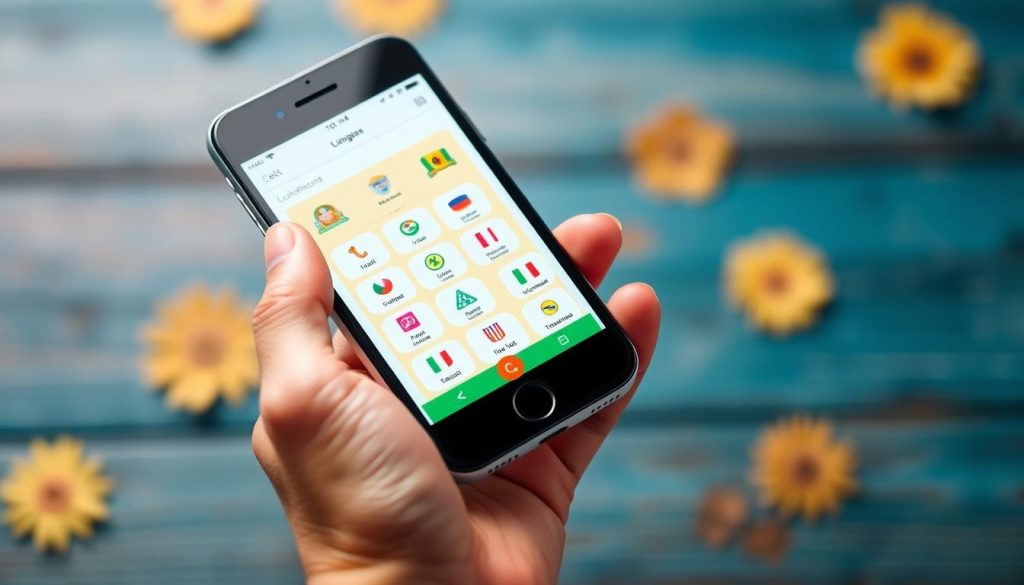
LingoDeer is revolutionizing language learning with its comprehensive approach to teaching Asian languages. The app has established itself as a premier choice for learning Japanese, Korean, Chinese, Vietnamese, and Thai, addressing the unique challenges these languages present to English speakers.
Overview
LingoDeer’s curriculum is designed by professional language educators, resulting in carefully sequenced lessons that build logically upon previous knowledge. The app excels in teaching complex writing systems through interactive exercises.
Pros
The app provides clear, comprehensive grammar explanations, making it valuable for analytical learners. Users praise the detailed explanations and interactive exercises.
Cons
While LingoDeer is primarily known for Asian languages, it has expanded to include European languages, applying the same structured approach.
Pricing and Features
LingoDeer offers competitive pricing with options for monthly ($14.99), quarterly ($39.99), annual ($79.99), or lifetime ($159.99) subscriptions. The app includes enhanced cultural notes integrated throughout lessons, helping learners understand the cultural context.
With its user-friendly interface and comprehensive features, LingoDeer is an excellent choice for language learners. The app’s reviews are generally positive, praising its detailed grammar explanations and interactive exercises.
Speak: Conversation-Focused Learning
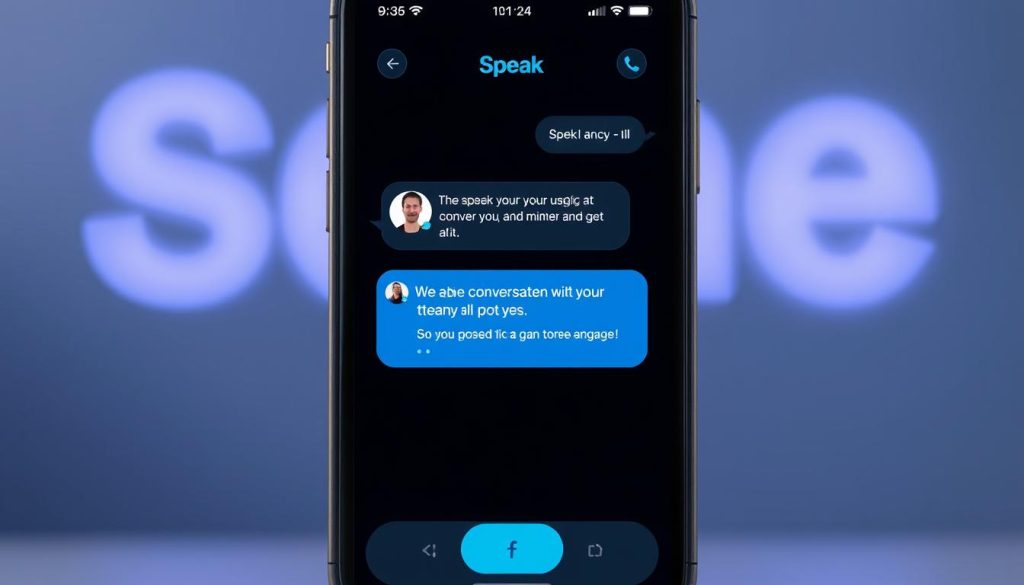
Speak is redefining language learning in 2025 with its AI-powered conversation practice. This app has revolutionized the market with its singular focus on developing conversational fluency.
Overview
Speak is a language learning app that emphasizes the importance of speaking to learn a language. Its AI element, “Speak Tutor,” acts as a live bot that helps improve speaking skills. Users commend Speak for providing examples of mistakes, which is useful during the learning stage.
The AI voice used for the Speak Tutor is non-robotic, making it easier to listen to. This feature enhances the learning experience by providing a more natural conversation environment.
Pros
The app’s advanced AI conversation partner maintains natural-sounding dialogues across various topics, adjusting complexity based on the user’s proficiency level. Speak’s AI provides detailed feedback on pronunciation, grammar, and word choice.
Cons
While Speak offers a comprehensive learning experience, it is primarily a subscription-based service. However, a free trial period is available to experience the core conversation features before committing.
Pricing and Features
Speak is priced at approximately $9.99/month or $69.99/year. The app uses spaced repetition to reintroduce challenging words and phrases in future conversations. In 2025, Speak introduced scenario-based learning that simulates real-world situations like ordering at restaurants or conducting business meetings in the target language.
ChatGPT and AI Conversation Partners

In 2025, AI conversation partners are offering a new dimension to language practice. ChatGPT and similar large language model (LLM) AI systems have emerged as powerful supplementary tools for language learners, offering unlimited conversation practice with remarkably human-like interactions.
How AI Chatbots Enhance Language Practice
These AI conversation partners provide a judgment-free environment where learners can practice without the anxiety that often accompanies speaking with native speakers, allowing them to build confidence at their own pace. The 2025 versions of these AI systems can now detect and correct grammatical errors, suggest more natural phrasing alternatives, and explain the reasoning behind corrections in a way that enhances understanding.
Language learners can use these tools to practice specific scenarios by prompting the AI to role-play situations like job interviews or casual social interactions in their target language, improving their speaking skills and vocabulary.
Limitations of AI Conversation Partners
Despite their advantages, AI conversation partners still have limitations in 2025, including occasional unnatural phrasing and difficulty with very colloquial expressions. These tools work best as supplements to structured language learning rather than primary learning methods, as they lack the carefully sequenced curriculum found in dedicated language learning apps.
To maximize their effectiveness, learners should use AI conversation partners in conjunction with other language learning tools and apps to create a comprehensive learning experience.
Best Free Language Learning Apps 2025
Free language learning apps have revolutionized the way we acquire new languages in 2025. With numerous options available, learners can choose from a variety of apps that cater to different learning styles and needs.
Duolingo Free Version
Duolingo remains one of the most comprehensive free language learning options, offering complete courses in over 40 languages. Although the free version includes ads and has some limitations, it provides a gamified approach and structured daily lessons that make learning engaging and fun. Duolingo’s free version is ideal for beginners and intermediate learners looking to build a strong foundation in their chosen language.
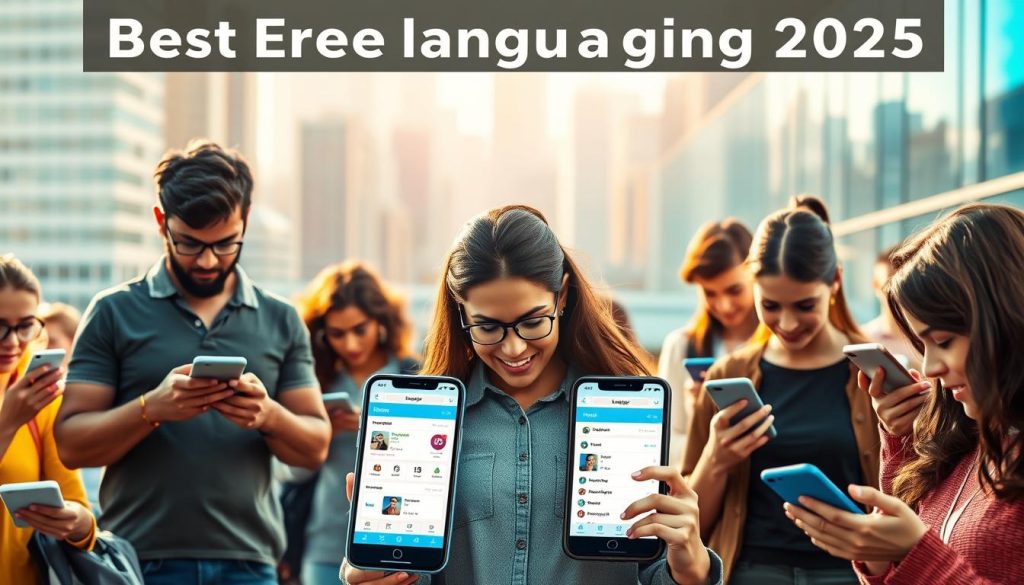
Memrise
Memrise is another excellent option for language learners, offering a free version with access to early learning lessons and content. Its spaced repetition system and mnemonic techniques help learners build vocabulary effectively. While the free version has limitations, it’s a great starting point for beginners, especially for European languages.
HelloTalk
HelloTalk connects learners directly with native speakers worldwide, facilitating language exchange through text, voice, and video conversations. This app is particularly useful for practicing conversational skills and getting feedback from native speakers. HelloTalk’s global community makes it an invaluable resource for learners looking to improve their language proficiency.
In conclusion, these free language learning apps offer valuable resources for learners in 2025. While they may have limitations compared to their paid counterparts, they provide a solid foundation for language acquisition and practice.
Language Learning Apps for Children
As technology advances, language learning apps for kids have emerged as a valuable tool for parents seeking to give their children a linguistic edge. These apps are designed to be engaging and fun, using a variety of methods to teach new languages to young learners.
Gus On The Go
Gus On The Go is an app aimed at children aged 4-6, using bite-sized lessons to introduce basic vocabulary. The app features an owl character named Gus who travels to different places, picking up new words and phrases along the way. Interactive games and colorful animations make learning fun and engaging.
Rosetta Stone for Kids
Rosetta Stone for Kids adapts the immersion methodology of its adult counterpart, using visually engaging, game-based activities to teach language through intuitive association rather than translation. This approach helps children learn a new language in a natural and effective way.
LingoPie
LingoPie takes a unique approach by teaching language through authentic children’s shows and movies. The app allows kids to learn vocabulary and phrases in context while being entertained. Parents can also create flashcards or adjust controls to cater to their child’s learning needs.
Mondly Kids
Mondly Kids offers short, engaging daily lessons featuring colorful animations and characters. The app introduces new vocabulary and simple grammar concepts in 10-minute sessions, perfect for young attention spans.

- Gus On The Go uses an engaging owl character to introduce basic vocabulary to young children.
- Rosetta Stone for Kids employs immersive, game-based activities to teach language naturally.
- LingoPie teaches language through authentic children’s shows and movies.
- Mondly Kids offers short, engaging daily lessons with colorful animations and characters.
Different Types of Language Learning Apps
In the realm of language learning, apps have become increasingly specialized, offering unique learning pathways. These apps cater to different learning styles and goals, ensuring that learners can find the right tool for their needs.
Conversation-Based Apps
Conversation-based apps, such as Tandem, HelloTalk, and Speak, focus on developing speaking and listening skills through interactions with native speakers or AI conversation partners. These platforms are particularly valuable for intermediate to advanced learners who need practice applying their knowledge in real-time interactions.
Vocabulary-Building Apps
Vocabulary-building apps like Anki, Memrise, and Clozemaster use spaced repetition systems to optimize memorization. They are ideal for beginners who want to lay solid foundations by reinforcing and teaching vocabulary through flashcards and repetition.
AI Tutor Apps
AI tutor apps represent the cutting edge of language education, using artificial intelligence to create personalized learning experiences. These apps provide real-time feedback, suggest corrections, and offer customized practice exercises targeting specific areas needing improvement.
Immersive and Gamified Learning Apps
Immersive learning apps like Rosetta Stone and Mango Languages teach through context, images, and intuitive association, mimicking the natural language acquisition process. Gamified learning platforms such as Duolingo and Lingodeer transform language acquisition into an engaging activity through points, levels, achievements, and competitive elements.
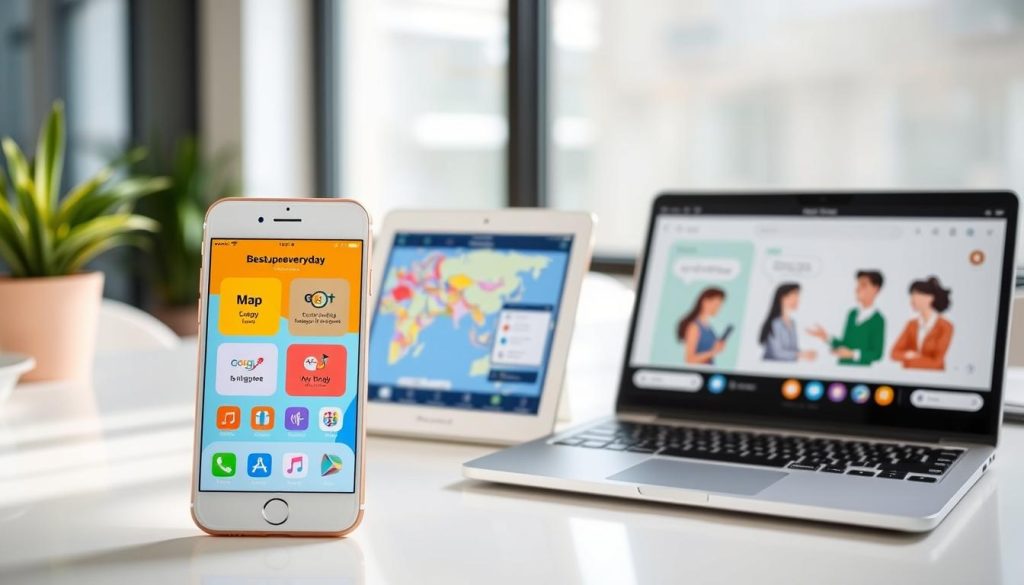
Apps to Avoid in 2025
Not all language learning apps are created equal, and some are best avoided in 2025. While numerous apps promise to deliver effective language learning experiences, some fall short due to various issues.
Google Translate
Google Translate is a useful tool for quick translations, but it lacks the structure and accuracy needed for effective language learning. Its literal translations often miss cultural nuances, potentially reinforcing incorrect language patterns. Users should be cautious when relying on it for constructing sentences in unfamiliar languages.
HelloPal
HelloPal has gained a problematic reputation due to its misuse for dating or inappropriate interactions rather than genuine language practice with native speakers. The app’s moderation systems remain insufficient, creating an environment where serious learners struggle to find committed practice partners.
Voxy
Voxy suffers from feature overload and an unfocused curriculum, leading to a confusing user experience. Users report that the app’s interface is cluttered and unintuitive, distracting from the actual learning process.

In conclusion, when selecting a language learning app, it’s crucial to avoid those with significant drawbacks, such as Google Translate, HelloPal, and Voxy. Opting for apps that provide structured learning experiences and genuine interactions with native speakers will yield better results.
Conclusion: Choosing the Right Language Learning App in 2025
The best language learning app is one that you’ll use consistently. Different apps excel in various areas, such as gamification, structured curriculum, or conversation practice. When choosing an app, consider your specific goals and learning style.
For beginners, gamified apps like Duolingo offer a fun introduction, while serious learners may prefer comprehensive programs like Babbel or Rosetta Stone. Combining multiple apps can also be effective, leveraging their unique strengths for a well-rounded learning experience.
Ultimately, consistency is key to language learning success. Choose an app that fits your needs and commit to regular practice.





